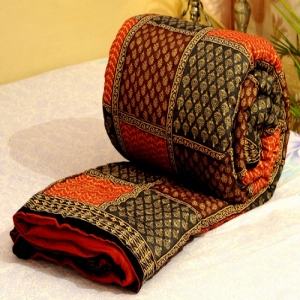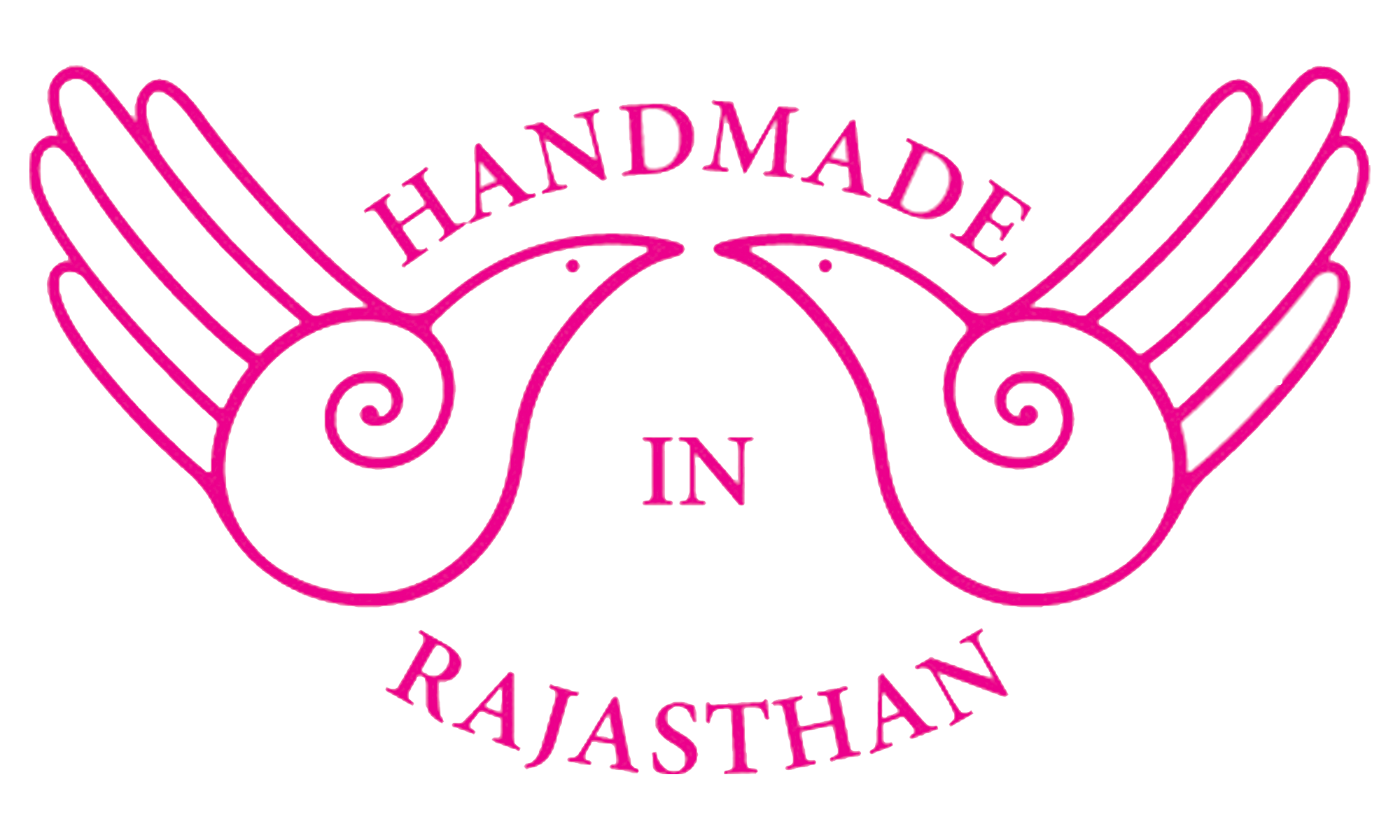- Home
- About US
- Art and Craft
- Artisans
- Master Crafts Persons
- Supporting Institutions
- News and Events
- Schemes
- Contact us
- Contact

Jaipuri RAZAI the art of quilt making. RAZAI typically is like a duvet or a bed comforter, traditionally made using hand spun and hand woven khadi as the fabric shell, carded cotton used for the filling also hand carded using a pindar (an instrument like a bow) and hand needle stitched.
Though there is no set origin of Jaipuri RAZAI but it is said to be connected to the Vishnuism’s (a Hindu sect who preach Lord Vishnu now known as Vaishnav) strict vegetarian rules developed in 16th century AD. Due to these rules, that time leather and wool was banned in certain religious sects of India. However the cold nights in Rajasthan inspired people here to quilt bedcovers, clothes, floor spread and whatever they thought to be essentially thick surface. This craft then further enhanced itself aesthetically as soon as it found royal patronage.
In Jaipur the craft can be seen in Topkhane Ka Rasta, Chaura Rasta, Chandpole Bzaar Sanganer. In Jaipur outskirts one can find this craft still practiced in traditional ways in Amer and adopted in Phagi. This craft is practiced in Muslim residential areas because a major part of it is done by women.
The community practicing this craft is Mansoor community a subset of Muslims. Cotton carders are called Dhunia or Pindara after the instrument (pindar – bow) they use to clean and fluff the raw cotton.
In bygone days instead of a fluffing machine a pindar (bow) was used to fluff the cotton and remove the dross. Now a carding machine has replaced it. Apart from making the traditional RAZAI as a cover in nights, master artisans have started to make new products out of quilting. Like bags, kurtis, cushion covers, etc. No innovations in terms of tagai have happened in the recent years.The major challenge faced by the craft, as informed by the master artisan, is the lack of labor. Artisans from the present generation do not want their children to enter the same field.

